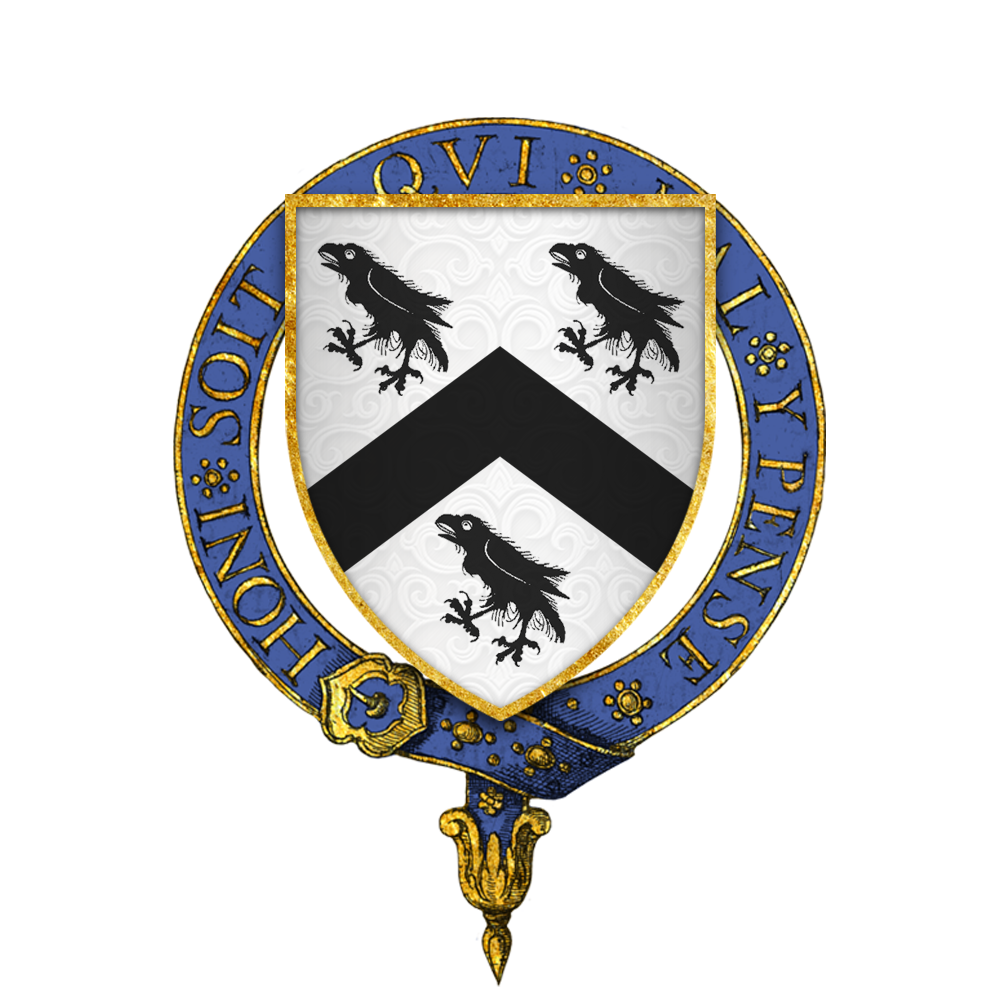Now playing; The
Maid Of Llanwellyn Lyrics
Midi © Barry
Taylor
Now playing; The
Maid Of Llanwellyn Lyrics
Midi © Barry
Taylor
|
"Whoever ill-affected to the state, shall dare to land in those partes of Wales, where I have anie employment under your majestie, must resolve with himself to make his entrance and irruption over my bellie." The story is told that after Henry Tudor's return to Britain (at Dale,
Pembrokeshire, in 1485) Rhys eased his conscience by hiding under Mullock
Bridge, Dale, as Henry marched over, thus absolving himself of his oath
to Richard.
Whatever his motives, the fact that Rhys made a major contribution to Henry's victory at Bosworth in 1485 is undisputed. Rhys may well have entertained Henry at Carew Castle before they split up on their way north, recruiting men along the way. When they met up again at Welshpool, Rhys had a large army of levied Welshmen with him. Many of there were Rhys' men for he had raised 500 trained cavalry to support the young Tudor - stout hearted men from the tenant farms of the Carew estates in South Pembrokeshire and all expert horsemen. The Battle of Bosworth, on 22 August, 1485, was a turning point in
British history and Richard III's death was supposedly at the hands of
Rhys. Rhys was knighted on the battlefield and made Governor of Wales.
After Bosworth, Rhys helped rid the king of two royal pretenders, Lambert
Simnel and Perkin Warbeck. For these and other services Henry bestowed
upon Rhys the Order of Knight of the Garter. Such a singular honour deserved a celebration, and the events staged by the new Knight were on a scale never before seen in Wales. Sir Rhys organized a Great Tournament for April, 1507, held at Carew Castle. Spread over five days this spectacular was attended by over 600 nobles and celebrated not only the Knighthood but honored St. George, patron saint of the Order as well. Rhys continued his allegiance to the Tudor dynasty, taking part in Henry VIII's invasion of France in 1513. It is said that both Tudor kings, Henry VII and VIII, placed implicit trust in Rhys who was allowed to rule his corner of Wales like a king and to die a natural death. The last years of Rhys' life were clouded in sorrow, and included the death of his son Griffith in 1522. With his last illness he left Carew for the Carmarthen Friary where he died in February 1525. At the dissolution of the monasteries his tomb was removed from the Friary and taken to St. Peter's Church, Carmarthen, where it can still be seen. Carew Castle, Published by the Pembrokeshire Coast National
Park Authority, 1987.  Arms of Sir Rhys ap Thomas, KG - Credit: Rs-nourse Coat of arms of Sir Rhys ap Thomas, KG See Sir Rhys' stall plate, still intact, within its original stall at St. George's Chapel - Argent, a chevron between three Cornish Choughs Sable.
|

Webpage © 1995-2017 Isle of Standauffish
Welsh Flying Flag copyright
© 1996 - 2003 by Riad
Dagher.